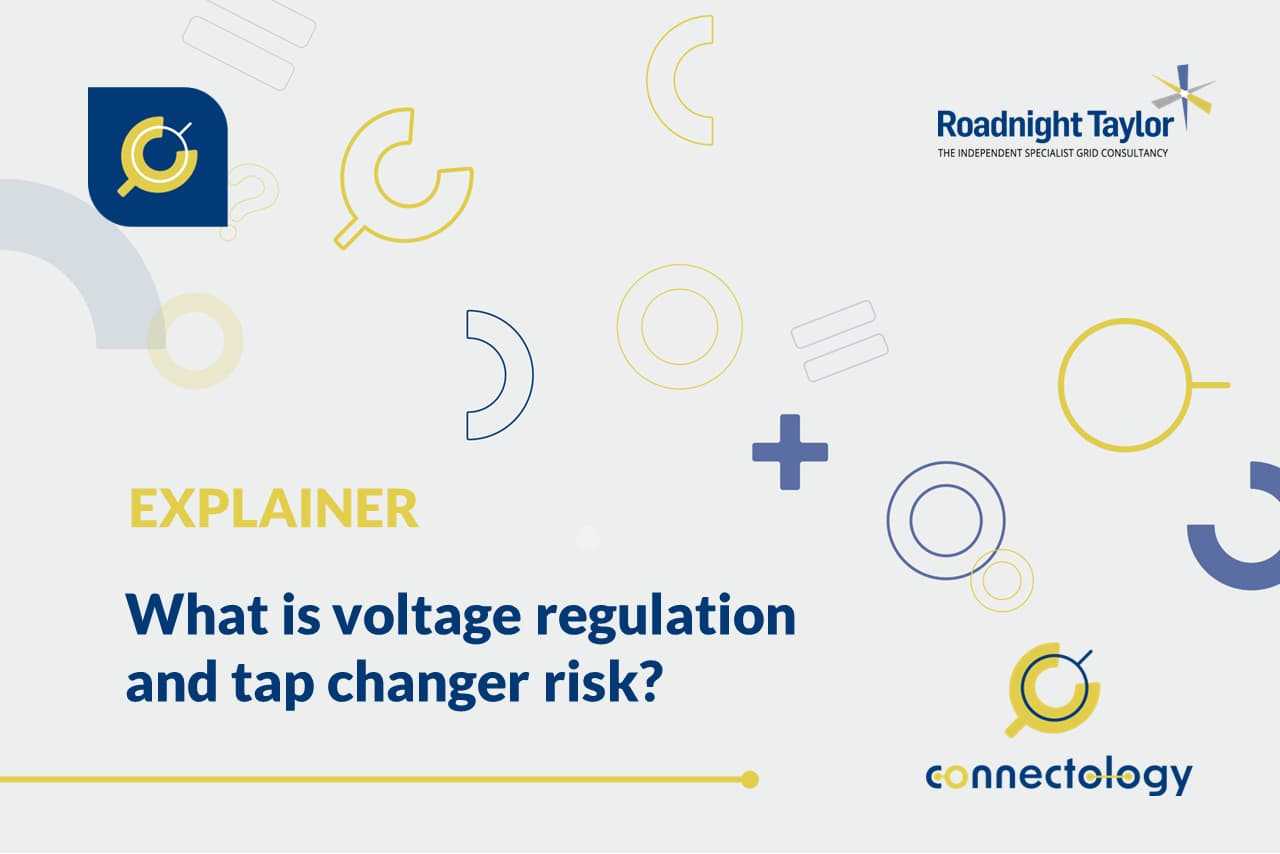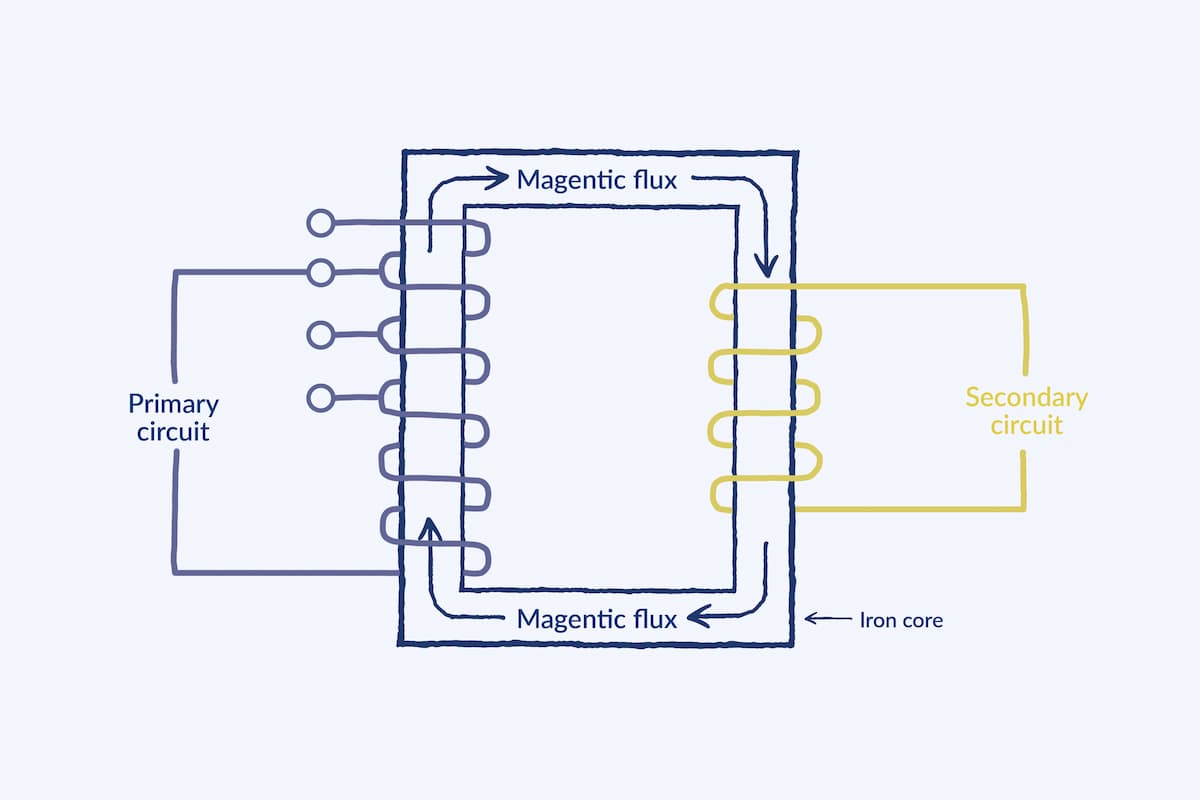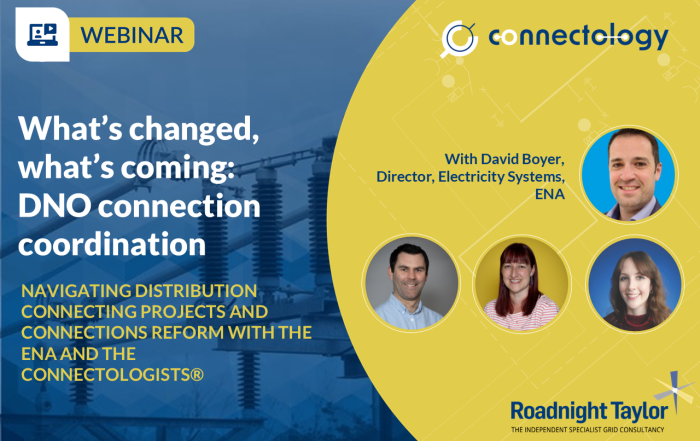What is voltage regulation and tap changer risk?
Network companies have an obligation to keep the voltage on the system within pre-defined limits. This article explains how voltage on the network is controlled and what it means for new connections to the network. You can read our previous article ‘What is voltage and voltage headroom?’ for more background.
Article by Pete Aston – acknowledged expert in networks
Pete joined Roadnight Taylor from Western Power Distribution, the UK’s largest DNO, where he was Primary System Design Manager. He led a team of sixty responsible for all connections and reinforcement of the extra high voltage network and oversight of the roll out of active network management across all four of WPD’s licence areas.
4 October, 2022

Voltage regulation
Controlling the voltage within certain limits is referred to in the industry as voltage regulation. The piece of kit on the network with the job of regulating the voltage is the humble transformer.
A transformer changes the voltage from the primary side to the secondary side by having a different number of windings around the core. If the primary winding has less turns than the secondary winding, the voltage goes up on the secondary side. If the primary winding has more turns than the secondary side, the voltage goes down on the secondary side.
Transformers on the grid are usually designed with the primary winding having a number of tappings, or taps, on it. This means that the primary winding can be selected to have different numbers of windings in use. By selecting different windings on the primary side, the voltage can be changed on the secondary side. In other words, choosing different taps on the primary side controls, or regulates, the voltage on the secondary side, to keep the voltage on the secondary side within limits.
To change the tap position, there is a device attached to the transformer called a tap changer (not the most original name!). This can change the taps whilst the transformer is in use, and is designed to be able to switch from one tap to another on-load without shorting anything out or blowing anything up (and they’re actually quite complicated bits of kit).
If the tap changer is the brawn, doing the actual job of changing the tap position and regulating the voltage, then the brain is the automatic voltage control (AVC) relay. This senses the voltage on the network and tells the tap changer when to operate. Sometimes this AVC relay doesn’t work properly when the power is flowing from the secondary side to the primary side (which is caused by generation connections), which is why sometimes new generator connections trigger the AVC relay to be changed.
Running out of taps
When new generators connect to the network, they tend to increase the voltage on the circuits. If there are transformers connected to these circuits (and there usually are) then the tap changers on those transformers will need to increase the number of windings on the primary side, in order to reduce the voltage on the secondary side and keep the voltage on the secondary side within limits.
This is all well and good, but eventually there will be no more taps left on the transformer. This is because creating tappings on the transformer primary winding costs money, so network companies strike a balance between a good number of taps (to provide a wide range of voltage regulation) and cost. Older transformers tend to have more taps available to increase the voltage on the secondary side (which is needed for high demands on the network), but fewer taps available to reduce the voltage on the secondary side (which is needed when generation connects to the network).
The risk for new connections, of either demand or generation (but with most impact for generation), is that it will cause a transformer to run out of taps. In this situation, a network company will trigger reinforcement of the transformer and the customer will have to pay a contribution towards the cost.
Contact us
Roadnight Taylor can help to identify where new connections might trigger transformer reinforcement due to voltage regulation and running out of taps, and can suggest ways to minimise the impact and reduce costs. To find out more call us on 01993 830571 or send us a message via our contact form.












